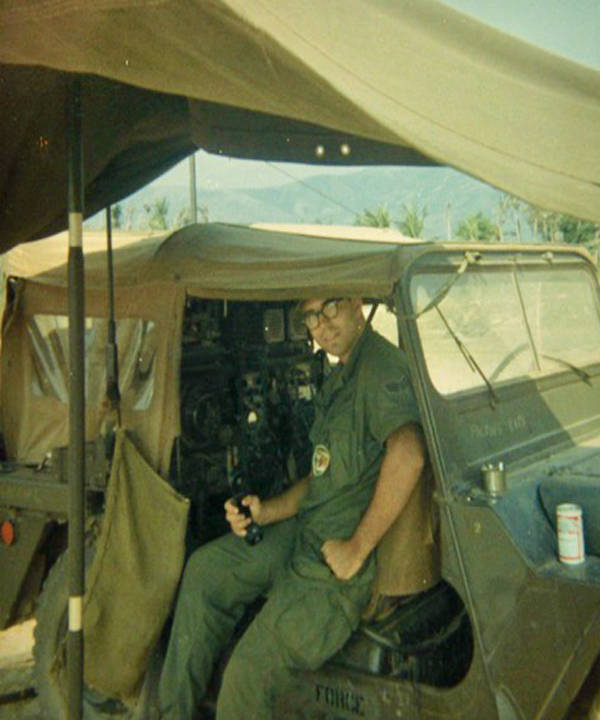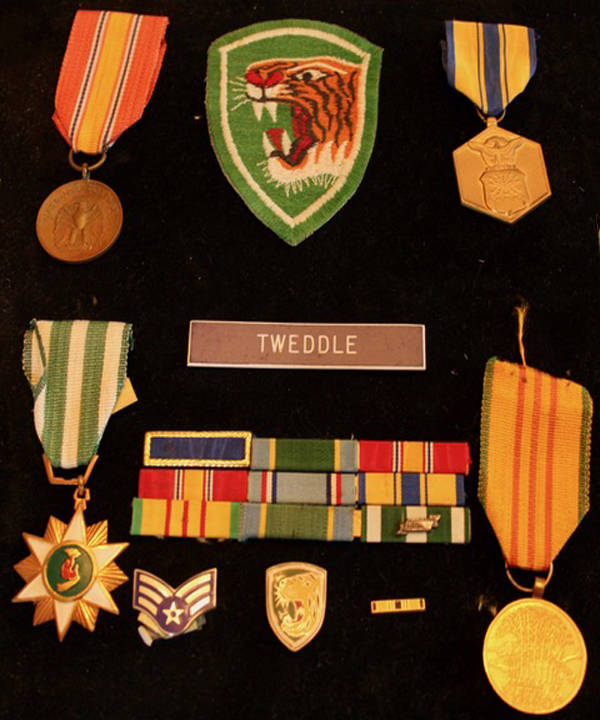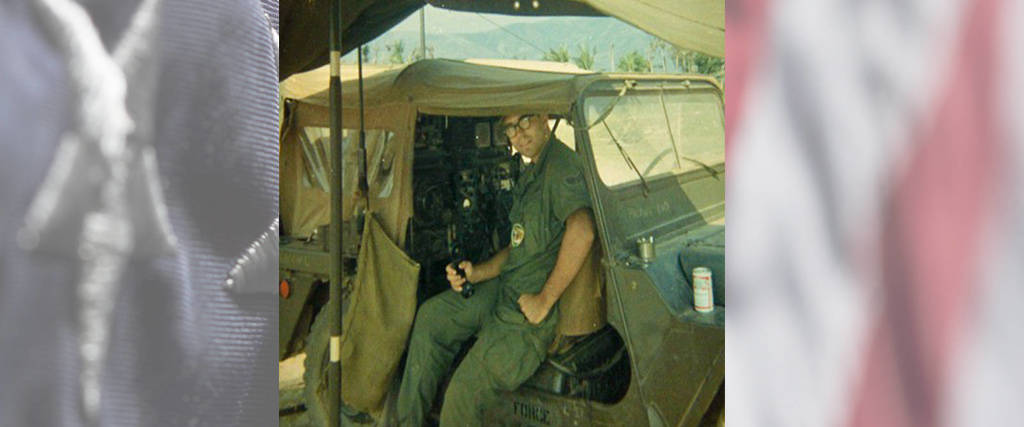Air Force Vietnam War Crystal Lake, IL Flight date: August, 2019
By David Adams, Honor Flight Chicago Veteran Interviews Volunteer

Howard Edgar Tweddle, Jr. was born on March 8, 1943, and grew up in Marion, Ohio. During high school, he discovered he could sing. So beginning at age 16 his vocal specialty became barbershop harmony. Howard graduated from high school in 1961 and enrolled in The Ohio State University in Columbus, Ohio. For two years, he worked his way through college relying on student loans and part-time employment. In the spring of 1963, he changed majors from engineering to business but had to go back to full time work. After a year out of school, he received a draft notice “asking” him to report for induction in the Army on August 1, 1964. Instead, Howard considered an enlistment in the Navy but ultimately entered the Air Force on July 21, 1964.
After Basic Training at Lackland AFB, Texas, he received his first assignment: Minuteman I nuclear missiles at Lowry AFB, Colorado. Because the Minuteman I system was phasing out, upon reporting to Lowry he was immediately sent to Keesler AFB, Mississippi, for electronics maintenance school. Upon completion in September, 1965, his first real duty station was Caswell Air Force Station in Maine. He was assigned to the 766th Radar Squadron (SAGE), a component of the Air Defense Command (ADC). At Caswell, Howard serviced the communications equipment supporting the F-106 Delta Dart interceptors. In October of 1966, he received orders for Vietnam.
He arrived in Vietnam on November 1, 1966, disembarking at Tan Son Nhut AB, Saigon. Howard received training as a forward air controller (FAC), learning to read maps and handle UHF and FM radios which were necessary for communicating with ground forces and air assets. He was attached to the Korean Capital Mechanized Infantry Division, also known as the Fierce Tiger Division. Its headquarters called “Tiger Town” was located just west of Qui Nhon, a city on the South China Sea in the II Corps area of operation. Howard lived and flew out of Tiger Town for the next 11 months until the end of his tour.

Almost immediately, Howard was tagged with the nickname “Tweet” which stuck. His Air Force unit had 17 men assigned to it. His duties included (1) airborne FAC flying in an O-1E observation airplane, (2) accompanying Tiger Division soldiers on patrols coordinating air support strikes, and (3) airborne psychological operations flying overhead Vietnamese villages. The operational area for the FAC unit was as far north as Da Nang in I Corps and south to Nha Trang in II Corps. Besides flying from the Tiger Town airstrip, he and his unit also flew from Phu Cat Air Base just north of Qui Nhon and from Nha Trang Air Base to the south. When he was not flying or on patrol with the Korean infantry, he manned the control tower, keeping track of the many airborne missions.
As a FAC, Tweet sat behind the USAF pilot in the front seat manning the radios and helping to identify ground targets. The single engine O-1E “Bird Dog” was also equipped with 3.75-inch white phosphorus (willy peat, or WP) rockets for marking targets for the fighters. He recalls calling in F-100 Super Sabres, F-4 Phantom IIs, and A1E Skyraiders in support of ground troops. These fighters expended napalm, high-drag bombs and 20mm cannon rounds. He remarked that their availability and use were what made any mission a success. One O-1E FAC mission Howard remembers in particular occurred during the monsoon season. As he describes it, “The Marines were getting pounded.” He called in a flight of 3 F-4s who “put it right on the money” saving the soldiers. Besides the fighters, from time-to-time he called in AC-47 “Spooky” gunships for support. These gunships orbited above the target in pairs on opposite sides of a circle.

Howard and his unit participated in three significant Korean forces operations during his tour. They were Mang Ho VI, Mang Ho VIII, and Oh Kak Kyo. Each was a “search and destroy” operation conducted jointly with U.S. military forces: 1st Cavalry Division or 9th Infantry Division, and the ARVN 22nd Division. On one memorable individual mission, his patrol set up an ambush but had grossly underestimated the size of the enemy force. He had to call in airstrikes which dropped napalm and strafed the enemy troops. After the remainder of the enemy withdrew, the patrol conducted bomb damage assessment (BDA) counting the number of troops killed and collecting the weapons left behind. He remembers that Army helicopters came in to ferry the weapons to Tiger Town for a display which was customary after a particularly successful operation.
Howard also flew psychological operations (PSYOPS) missions in the twin turboprop OV-10 Bronco. Seated in tandem behind the pilot, he operated a reel-to-reel tape deck connected to a loudspeaker facing out of the aircraft. Audio broadcasts were designed to influence the Vietnamese civilians to be favorable to the Allied forces and oppose the Viet Cong. Once the broadcast was over, Howard distributed leaflets out a chute in the airplane in what he called a “bullshit blizzard.”
He returned to the States on October 30, 1967. His charter “freedom flight” full of combat veterans was “not warmly welcome” at Sea-Tac airport in Seattle. He made his way across country back to Caswell Air Force Station in Maine where he completed his enlistment in July, 1968 as an E-4. He returned to Ohio State, graduating in March, 1972 with a business degree. On campus, Howard and other Vietnam veteran students endured the “worst treatment” being called “baby killers” and other epithets.
As a result of his Vietnam service, Howard was awarded the Air Force Commendation Medal for meritorious service for the period November 5, 1966 to October 1, 1967.
Howard worked in the procurement departments of many companies from 1972 until his retirement. He remembers in particular being involved at NCR (National Cash Register) with the development of scanners used in grocery stores. He finally settled in the Chicago area to be closer to family. Howard retired from Woodward Governor Company as its Global Supply Manager in December, 2009.
Between Howard and wife, Cheryl, they have two sons, two daughters, and four granddaughters. In retirement Howard and his wife travel and sing. He is a member of the New Tradition Chorus, an award winning a cappella barbershop chorus with headquarters in Northbrook, IL. He and Cheryl recently returned from an international convention and competition of the Barbershop Harmony Society in Salt Lake City.



